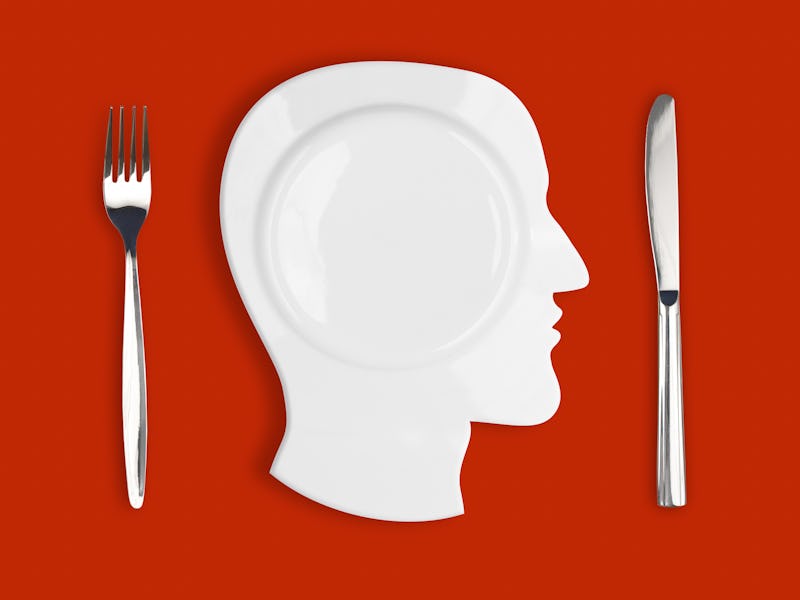Food taste has a surprising brain function you will remember at your next Italian meal
"Taste is somehow linked indelibly to our knowledge about food."

We know that pasta tastes good.
We also know that pasta comes from Italy.
How the brain combines and stores that information, which covers multiple categories— taste and geographic location, in this case — has puzzled neuroscientists, but a new study may help connect the dots.
To understand how the complex knowledge of the world is represented in our brains, a new neuroscience study explored the relationship between the taste of food and what we know about food.
This examination revealed that the parts of the brain linked to taste light up when we think about other notable aspects of food, such as place or people associated with it, even when we’re not actually eating anything.
An important implication of these findings is that when we access cultural knowledge about food, such as the region from where it comes, we continue to involve neural representations associated with taste, says study author Scott Fairhall, a researcher at the University of Trento, in Italy.
“Taste is somehow linked indelibly to our knowledge about food, even the abstract cultural knowledge we possess about food,” he tells Inverse.
The findings were published Monday in the Journal of Neuroscience.
Insular cortex: activate
The study used functional magnetic resonance imaging, or fMRI, to scan the brains of 16 healthy men and women, all from Italy. The subjects were asked to answer questions about words cross three categories: food, places, and people. All were specific to the country of Italy — so traditional Italian dishes, famous Italian people, and Italian cities. As they did so, their brain activity was monitored.
The brain scans revealed that when the participants thought about a certain aspect of a dish — for example, that pasta carbonara originates from the Italian region of Lazio — the area of the brain that typically lights up when we think of taste was activated.
The insular cortex, located deep inside the brain, is regarded as the primary sensory area for taste and was seen to light up in the subjects’ brains. This was in tandem with regions that have long been known to be tied to the perception of geographical locations, including the parahippocampal gyrus, the retrosplenial complex, and the transverse occipital sulcus.
Thinking of food activated the insular cortex, the parahippocampal gyrus, and the retrosplenial complex.
This new research aids our understanding of how semantic concepts are represented in the brain. Semantic knowledge is the general world knowledge that we have collected throughout our lives; for example, the grass is green, or the capital of France is Paris.
Fairhall uses the example of the Granny Smith apple. We know that apples are round, because we see and touch them; we know that they are sweet because we taste them. But how does the brain combine this information with knowledge that is not directly specific to our senses, such as that the Granny Smith apple comes from a tree in Australia in 1868?
That’s known as verbal knowledge — and how this knowledge is combined in our brain is what his research aimed at finding out.
These findings show that in the sensorimotor systems of the brain, the nature of an object (such as food and taste) and the nature of the information (for example, geographic location) surprisingly guide the organization of linguistically-acquired knowledge, such as the historical-cultural provenance of a well-known food dish, Fairhall tells Inverse.
The drive behind his new research is to understand how knowledge is sorted in the brain, Fairhall says. He thinks these new findings are “just the tip of the iceberg.”
The next steps, he says, involve further investigation of these findings, in order to “understand what differences in the brain differentiate those of us who are worse or better at knowing things and how this system changes as we age into later life.”
Abstract: Knowledge about objects encompasses not only their prototypical features but also complex, atypical semantic knowledge (e.g. ‘Pizza was invented in Naples’). This fMRI study of male and female human participants combines univariate and multivariate analyses to consider the cortical representation of this more complex semantic knowledge. Using the categories of food, people and places, this study investigates whether access to spatially related geographic semantic knowledge involves: a) the same domain-selective neural representations involved in access to prototypical taste-knowledge about food; b) elicits activation of neural representations classically linked to places when this geographic knowledge is accessed about food and people. In three experiments using word stimuli, domain-relevant and atypical conceptual access for the categories food, people and places were assessed. Results uncover two principles of semantic representation: food-selective representations in the left insula continue to be recruited when prototypical taste-knowledge is task-irrelevant and under conditions of high cognitive demand; access to geographic knowledge for food and people categories involves the additional recruitment of classically place-selective parahippocampal gyrus (PPA), retrosplenial complex (RSC) and transverse occipital sulcus (TOS). These findings underscore the importance of object category in the representation of a broad range of knowledge, while showing how the cross recruitment of specialized representations may endow the considerable flexibility of our complex semantic knowledge.